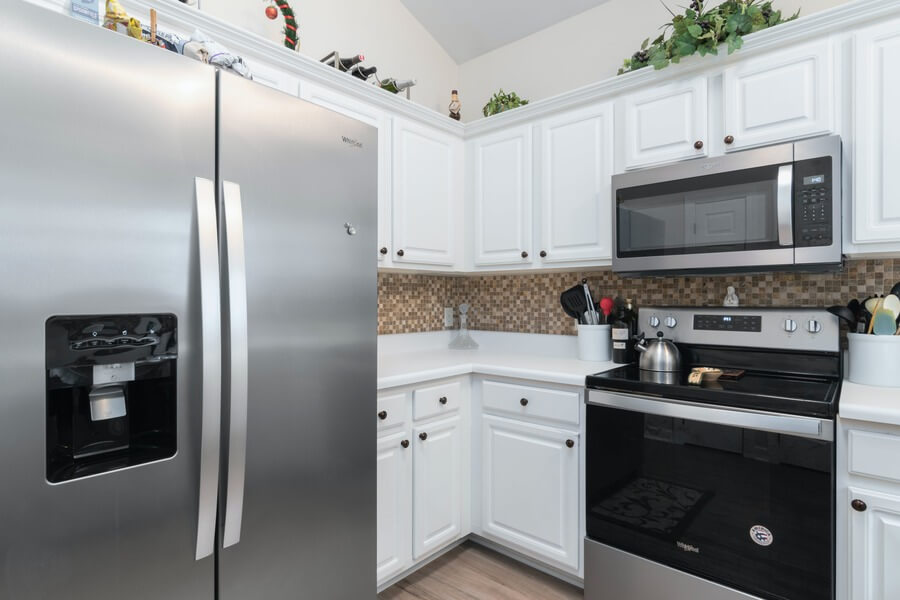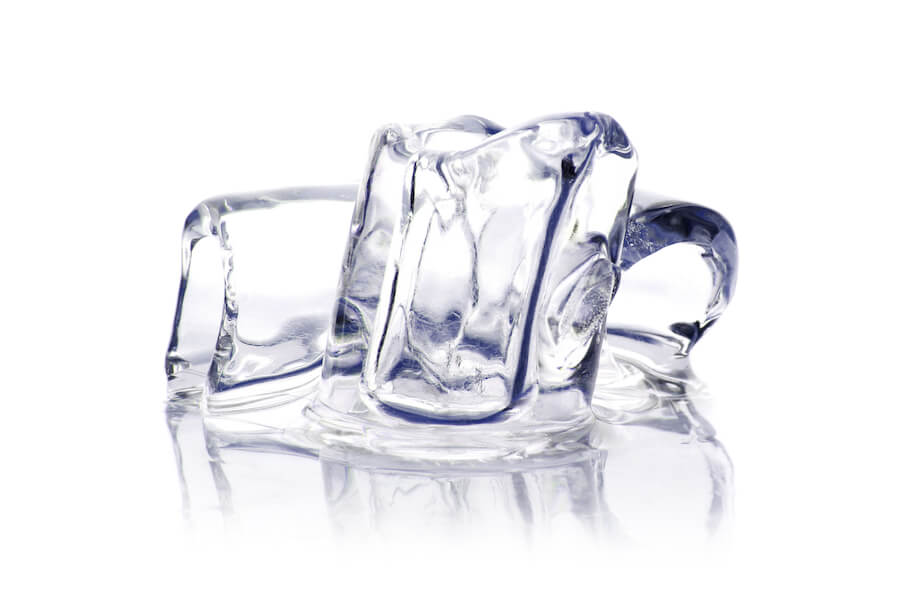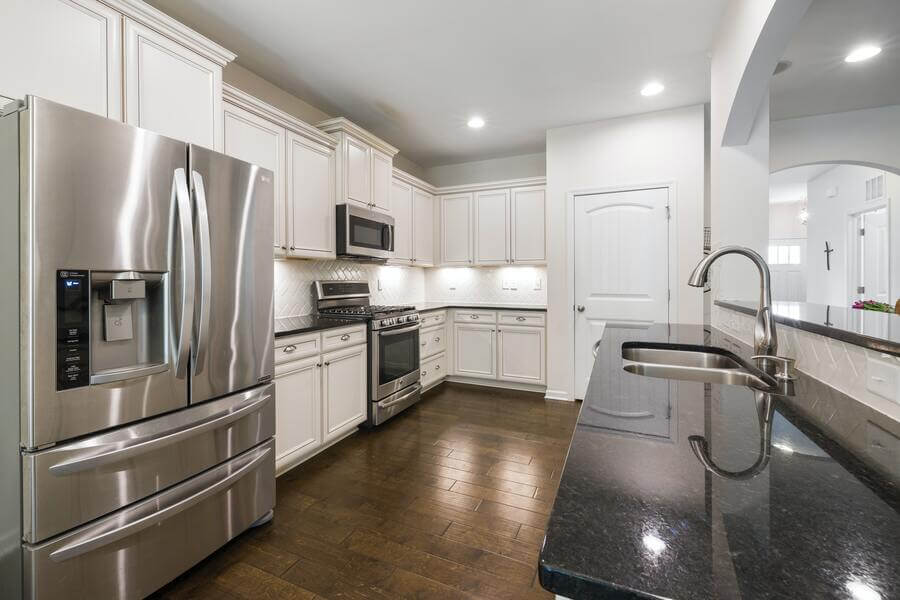The Samsung refrigerator ice-maker is a convenient accessory for cold drinks and making ice readily available. These ice-makers are generally known for their durability and reliability.

However, occasionally, it is possible to encounter issues with your ice maker. If you find that the ice maker isn’t functioning as expected, these are some common problems and how to solve them.
What are Some Problems with your Samsung Refrigerator Ice Maker and their Solutions?
Samsung refrigerators have different models of refrigerators that produce ice cubes or crushed ice. It’s typically in the freezer compartment and can dispense ice into a glass or container.
Some models may also have additional features like ice water dispensers and the ability to adjust ice cube sizes. The specifics of how the units operate and their problems can vary depending on the refrigerator model.
1. The ice maker is not producing ice.
If your ice maker isn’t producing ice, it could be due to different reasons. For one, the ice maker may be turned off. Also, the water supply line might be blocked or disconnected. The freezer temperature may need to be higher, or there could be an issue with the ice maker.
Solution:
- Check to confirm that the ice maker is turned on.
- Ensure the water supply is connected and the water valve is open. Clean the water filter or replace it if necessary.
- Verify that the freezer temperature is set correctly.
2. The Ice Production is Low
Another common problem is that the ice maker may produce ice, but more is needed. One reason for low ice production is that the water supply to the ice maker needs to be increased.
Either because the water line is partially blocked or because of a slow water inlet valve. Ice production is most efficient at temperatures around 0°F (-18°C) or lower. If the temperature is too high, the ice-making process can be slow. Aside from this, an overcrowded freezer can make it harder for the ice maker to maintain the freezing condition you want.
Solution:
- Ensure the freezer temperature is set correctly (around 0°F or -18°C). Clean the ice maker and its components regularly. Check for obstructions in the ice maker that might be blocking ice production.
- Reorganize the freezer to allow for proper airflow. Avoid overpacking your freezer.
- Clean and maintain the ice maker as often as possible. Pay attention to areas like the evaporator coils, among other components.
- If low ice production persists, you might have to call a technician to inspect the ice maker for mechanical issues.
3. The Ice Cubes are Small or Shaped Wrongly

This can be caused by low water pressure. When the water pressure is low, the molds may not fill up completely. You then end up with small or oddly shaped ice cubes.
Solution:
- Check the water inlet valve and the water supply line for any issues. Over time, deposits can accumulate in the water inlet valve, reducing water flow. Clean out the valve or replace it if it’s old and malfunctioning. These can help improve water pressure.
- If the refrigerator has a water filter, ensure it’s not clogged. Replace the water filter if it’s blocked.
- Adjust the freezer temperature.
4. The Ice Tastes or Smell Bad
This is usually due to impurities in your water supply. If the water filter is not replaced regularly or the ice maker components are not cleaned. Contaminants in the water can affect the taste and smell of the ice.
Solution:
- Replace the old water filter to improve water quality.
- If the bad smell continues, consider using an external water filtration system.
5. The Ice Maker is Noisy
Ice makers should make some form of noise while it’s working. However, if the sound is excessively loud, there could be a problem. Unusual noises from the ice maker can be caused by ice cubes getting stuck or jammed. There could also be loose components that need to be tightened.
Solution
- Check for loose or misaligned components.
- Tighten any loose screws or replace worn parts.
- If you notice some strange, loud noise, you should contact Samsung service support.
6. Ice Maker is Not bringing out ice.
Sometimes, the ice maker may not be producing ice because the ice tray is empty. Moreover, If it has yet to cycle to fill with water and freeze the ice, it makes any. The issue may also be a defective water inlet valve, or the water supply line is clogged. The unit itself needs to be fixed. The motor, thermostat, or other internal components could have malfunctioned.
Solution:
- Ensure there are no obstructions in the ice maker’s engine.
- Check the Water Supply and ensure that your refrigerator is correctly connected to it. Sometimes, the issue may be with the water supply line, not the valve.
- To determine if the unit is faulty, try resetting it. Could you turn it off and back on? If it still doesn’t produce ice, you might need to replace the ice maker unit.
- If the problem persists, it might indicate a faulty motor or sensor. In this case, professional repair might be required.
7. Frost or Ice Build-up in the Ice Maker
Typically, ice accumulates in the dispenser tube or ice machine tray. The ice will need to be defrosted to fix the ice build-up problem. A faulty seal on the ice maker or freezer door can cause this.
Solution:
- Check for any gaps or damage and replace the seal if necessary.
- To fix this, you need to defrost the ice. Some Samsung refrigerator models have the auto-defrost feature. This would automatically defrost the ice maker or the entire refrigerator. Whether you defrost just the ice maker or the fridge itself depends on how much ice has accumulated in the ice maker tray or bucket.
- You could remove the ice maker so it can thaw. Otherwise, you can use a hairdryer to emit mild heat into the frozen area. You could also use a steam gun to generate sufficient heat to dissolve the blockage. Using this, you won’t risk any damage to the internal part of the refrigerator.

If your ice maker leaks, it could result from a loose or damaged water supply line. Occasionally, there could be cracks in the ice bucket or gasket. This makes the water escape when it shouldn’t.
Solution:
- Inspect the water supply line and connections for leaks. Make sure the ice maker is level to prevent water from overflowing.
- Replace any damaged or worn-out parts. If your ice maker bucket is cracked, you need to fix it.
The Water Valve is Defective
The water inlet valve supplies water to the ice maker in your refrigerator. When it becomes defective, it may not open fully, causing low water pressure or a complete lack of water flow. If the valve is not opening, the ice maker won’t amass enough water to produce ice.
Solution
For this, you might need to replace the faulty water inlet valve. You can order a replacement part and follow the manufacturer’s instructions. On the other hand, if you need more time to do it yourself, seek professional help.
Always follow the specific troubleshooting and repair instructions in your Samsung refrigerator manual first. If you need help resolving an issue, it’s often a good idea to contact Samsung customer support or a qualified technician for assistance.
